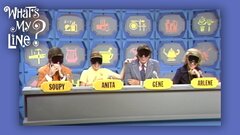Bob Crane

Actor • Musician • Personality • DJ
Birth Date: July 13, 1928
Death Date: June 29, 1978 — 49 years old
Birth Place: Waterbury, Connecticut
Handsome and affable, actor Bob Crane looked every bit the wholesome, Middle-American everyman he played in film and television. As the star of the unlikely CBS wartime comedy "Hogan's Heroes" (CBS, 1965-1971), Crane gained national stardom with his portrayal of Colonel Robert Hogan; the irreverent and mischievously sly leader of a group of Allied P.O.W.'s during World War II. Crane's mysterious and violent murder in 1978 shocked his fans, and would later become the subject of director Paul Schraeder's 2002 biopic, "Auto Focus," starring Greg Kinnear in a spot-on portrayal of a tragic man who died far too soon.
Born Robert Edward Crane in Waterbury, CT on July 13, 1928, the future radio and television star grew up the younger of two sons in a Roman Catholic family. Far more interested in playing music than hitting the books, Crane earned a reputation as a class clown in high school before dropping out to pursue a musical career. A gifted drummer, Crane performed with a number of dance bands and even a symphony orchestra for a time before he got married in 1949. Unable to support himself and his newlywed wife on a drummer's pay, however, Crane reluctantly abandoned his musical ambitions to go in search of a real job.
As luck would have it, Crane found a vocation that allowed him the best of both worlds: radio broadcasting. In 1950, Crane kicked off his disk jockeying career at WLEA in Hornell, NY. After a year there, Crane spent the next five years hopscotching up and down the East Coast, moving to bigger and better markets. In 1956, Crane finally hit the big time, landing the morning show at the Los Angeles radio station KNX. Crane's combination of sly wit, playful drumming, and celebrity guests gained him a huge following. Before long, Crane had the number one rated morning show in L.A. Dubbed the "The King of the Los Angeles Airwaves," Crane rubbed elbows with such major Hollywood stars as Marilyn Monroe, Bing Crosby, Jayne Mansfield, Bob Hope, and Frank Sinatra. Crane would later use these lofty connections to further his career. After conquering the Los Angeles airwaves, Crane set his sights next on television. Though not formally trained as an actor, Crane's broadcasting experience and undeniable charisma made him a natural in front of the camera. His first professional acting debut, ironically enough, was in a 1961 episode of "The Twilight Zone" (CBS, 1959-1964) entitled "Static," in which he played a disk jockey. Hardly a stretch, and for that matter, hardly a part. Nevertheless, the role served as Crane's official entry into acting. Employing some shrewd political savvy to promote his TV career, Crane used his radio show as a forum to ingratiate himself with television stars - and more importantly, television executives.
Crane's campaign paid off. In 1962, the locally famous (but nationally, still unknown) Crane landed a semi-recurring role on the top-rated comedy in the land, "The Dick Van Dyke Show" (CBS, 1961-66). In 1964, Crane won an even bigger role, that of family physician, Dr. David Kelsey, on "The Donna Reed Show" (CBS, 1958-1966). Interestingly, although the character was intended to be recurring, CBS had the character axed after just one appearance. The reason was CBS censors found Crane's charming and flirtatious Kelsey "too suggestive" for a family sitcom. If Reed's prim and pristine housewife, Donna Stone, was going to have chemistry with anyone, it was going to be with Alex Stone, her conservative pediatrician husband, played by Carl Betz.
The network's decision was a blow to Crane's ego, but fortunately, his pain was short-lived. In 1965, Crane got a sweet consolation that more than made up for his previous loss - a starring role in his very own comedy pilot called "Hogan's Heroes." The show's premise was extremely controversial for its time. Set during World War II, the show centered on a group of Allied prisoners held captive in a German P.O.W. camp run by a tyrannical Nazi commandant. As absurd as it may have sounded, the premise worked. Critically reviled, historically inaccurate - yet wildly popular with viewers - "Hogan's Heroes" went on to become one of the most successful sitcoms of all time. Nominated for two Emmys in 1966 and 1967, the show also garnered Crane two Emmy nods for Outstanding Male Lead in a Comedy Series. Ratings for "Heroes" remained consistently high throughout its six-year run.
Well-suited to stardom, Crane reveled in his newfound fame. Indulging in the perks of celebrity - as well as the many temptations that came with it, Crane became a frequent guest at Hugh Hefner's Hollywood mansion, where he developed a passion for sexual hedonism. Fascinated by sex all his life, especially in its kinkier forms, Crane's carnal obsessions quickly developed into an insatiable sexual hunger that would eventually destroy his marriage and, in the end, his very life.
In 1970, the married Crane began a torrid affair with his comely "Heroes" co-star, Swedish-American actress Sigrid Valdis. At the peak of his career and wealthier than he'd ever been in his life, Crane divorced his wife of nearly 20 years, Anne Terzian Crane, so that he could marry and start a new life with Valdis. Little did they know that their fortunes would soon take an unfortunate turn. To Crane's shock, CBS, in a bid to attract younger viewers, canceled "Hogan's Heroes" in 1971 as part of its "rural purge" - a radical new programming strategy that would have lasting repercussions. The reason? That year, the A.C. Nielsen Company redesigned its ratings system to track demographic information on TV households, in addition to numbers. This re-shifting of focus on who was watching certain programs (as opposed to just how many) set the standard for the modern television ratings systems. Unfortunately, this new accuracy did not bode well for "Hogan's Heroes." Though its ratings were still quite respectable, the new data revealed that the viewership of "Hogan's Heroes" skewed to a much older crowd - being that WW II had since been over some 25 years prior. With demographics the king in this new world order, the time for "Hogan's Heroes" was over. Following the cancellation of "Heroes," Crane maintained his visibility with various film and television appearances. In 1973, Crane starred in "Superdad," the first of two forgettable films he made for Disney (the second being 1976's "Gus"). Both films tanked at the box office. Though frustrated by the failures, Crane managed to stay moderately busy, appearing regularly on talk shows and as a celebrity guest on the game-show circuit. In 1975, NBC gave Crane his second (and ultimately, last) shot at primetime with "The Bob Crane Show" (NBC, 1975). A critical bomb, the show lasted just 13 episodes before getting axed.
Coming to grips with his fading celebrity in the mid-1970's, Crane spent his last remaining years trying to reclaim much of his old glory . Unable to find any work in television, Crane was forced to swallow his pride and take whatever acting jobs came his way, eventually finding steady work on the dinner theater circuit. In the last two years of his life, Crane maintained an exhausting schedule, often spending 10 to 11 months out of the year touring with traveling stage productions. While the pay was peanuts compared to his "Hogan's Heroes" days, touring did provide Crane one fringe benefit that he greatly enjoyed - wild and promiscuous sex with strangers. By now, a complete slave to his carnal compulsions, Crane became addicted to the thrill of the swingers lifestyle. For Crane, having sex on the road became a way of feeding not just his ferocious sexual appetites, but also fragile ego. While Crane may have been washed-up by Hollywood standards, he knew that in places like Topeka and Tulsa, the name "Bob Crane" still carried with it a measure of star power. And there was never a shortage of women who would jump in bed to snare a "star."
Crane's sexual escapades finally came to a head in the late seventies. By now a seasoned swinger and shameless sex addict, Crane added a new title to his resume: video voyeur. To preserve his encounters for posterity (and no doubt, later re-visitation), Crane began photographing his sexual liaisons with a cheap camera. Building up his collection over the years, Crane's technique improved greatly, as did his portfolio - going from crude, black-and-white snapshots to more polished, even choreographed narratives. But with the dawn of the video age, Crane took his sordid obsession to a whole new level. A lifelong shutterbug and gadgets freak since the 1950's, Crane became enamored with early audio-visual technology - in particular, home video recorders. One of the first owners of a portable video camera and playback machine (a primitive precursor to today's VCR), Crane began taping his raunchy exploits. Clunky and outrageously expensive by today's standards, these pieces of dinosaur technology allowed Crane to make his own highly explicit, amateur sex tapes nearly a decade before Paris Hilton was even born. It was as a result of Crane's newfound obsession, that he would meet a man named John Henry Carpenter.
Carpenter, a short, husky, average-looking man in his forties, was a video equipment salesman from Los Angeles. Carpenter shared two things in common with Crane - an interest in video technology and an unnatural obsession with sex. The two men met in 1975, when Carpenter sold Crane his very first video camera and the two became friends, but this relationship was also one of mutual benefit. For his part, having Carpenter around meant Crane would always get the latest, most state-of-the art equipment before anyone else - and usually at a huge discount. Carpenter, on the other, got to have a celebrity for a friend, which of course had its own perks - namely getting Crane's sexual leftovers and/or rejects (of which there were not many). Once in a rare while, though, Crane would feel generous and share his conquests with Carpenter for a menages-trois. By 1977-78, however, Crane grew tired of Carpenter's clinginess and the two men's relationship grew strained.
In 1978, Crane was in Scottsdale, Arizona, nearing the end of a scheduled four-week run of "Beginner's Luck." When Crane failed to show up for a rehearsal on the morning of on June 29, 1978, production came to a sudden halt. Unable to reach him, an employee was dispatched to Crane's hotel to retrieve him, but instead, made a grisly discovery: Crane brutally murdered in his hotel room. The coroner's report later revealed that Crane, who was just two weeks shy of his 50th birthday, had been bludgeoned and then strangled with an electrical cord. The initial police investigation turned up few clues, but a large number of suspects - due in no small part to the dozens of homemade pornographic videos found at the murder scene. Eventually, a prime suspect emerged in John Henry Carpenter. But even though the circumstantial evidence pointed to Carpenter as the killer, police science at the time was not yet up to the task of proving it. As a result, Carpenter was released for lack of evidence.
But all that would change, however, by the early 1990's. Thanks to innovations in the field of forensic science, John Henry Carpenter was re-arrested in 1994 for the murder of Bob Crane. Carpenter maintained his innocence, downplaying his relationship with the murdered actor as merely an acquaintanceship. During the trial, however, the prosecution showed video of Crane and Carpenter engaging in sex with a woman. The prosecution hoped that jurors would be shocked by the true, depraved nature of Crane and Carpenter's relationship. Unfortunately, their strategy backfired. Carpenter was acquitted. Whether or not he knew more about the murder than he claimed was a secret Carpenter took with him to his grave on Sept. 4, 1998.
Crane's life and murder was the subject of the underrated 2002 film "Auto Focus." Based on the book The Murder of Bob Crane by Robert Graysmith, "Auto Focus" starred Maria Bello, Willem Dafoe, and Greg Kinnear as Crane, in one of his best performances to date. The murder of the beloved TV star Bob Crane remains unsolved.
Credits
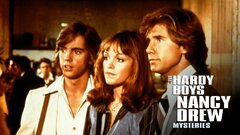
The Hardy Boys / Nancy Drew MysteriesStream

Gibbsville

Gus

Joe Forrester

Police Woman
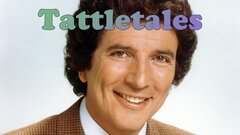
TattletalesStream

L'idée fixe

Superdad

The Delphi Bureau
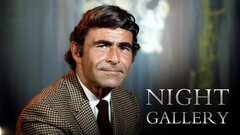
Night GalleryStream

Night GalleryStream
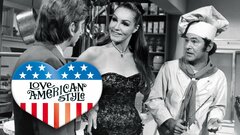
Love, American Style
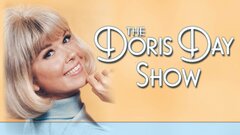
The Doris Day ShowStream
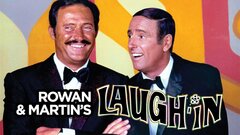
Rowan & Martin's Laugh-InStream

The Wicked Dreams of Paula Schultz
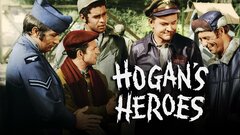
Hogan's HeroesStream

The Danny Kaye Show
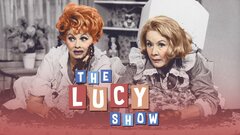
The Lucy ShowStream
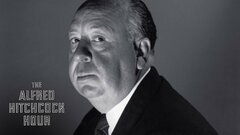
Alfred Hitchcock HourStream
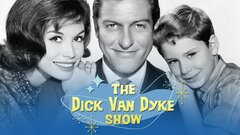
The Dick Van Dyke ShowStream

Return to Peyton PlaceStream
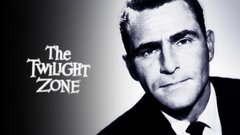
The Twilight ZoneStream
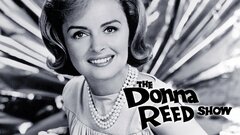
The Donna Reed ShowStream
